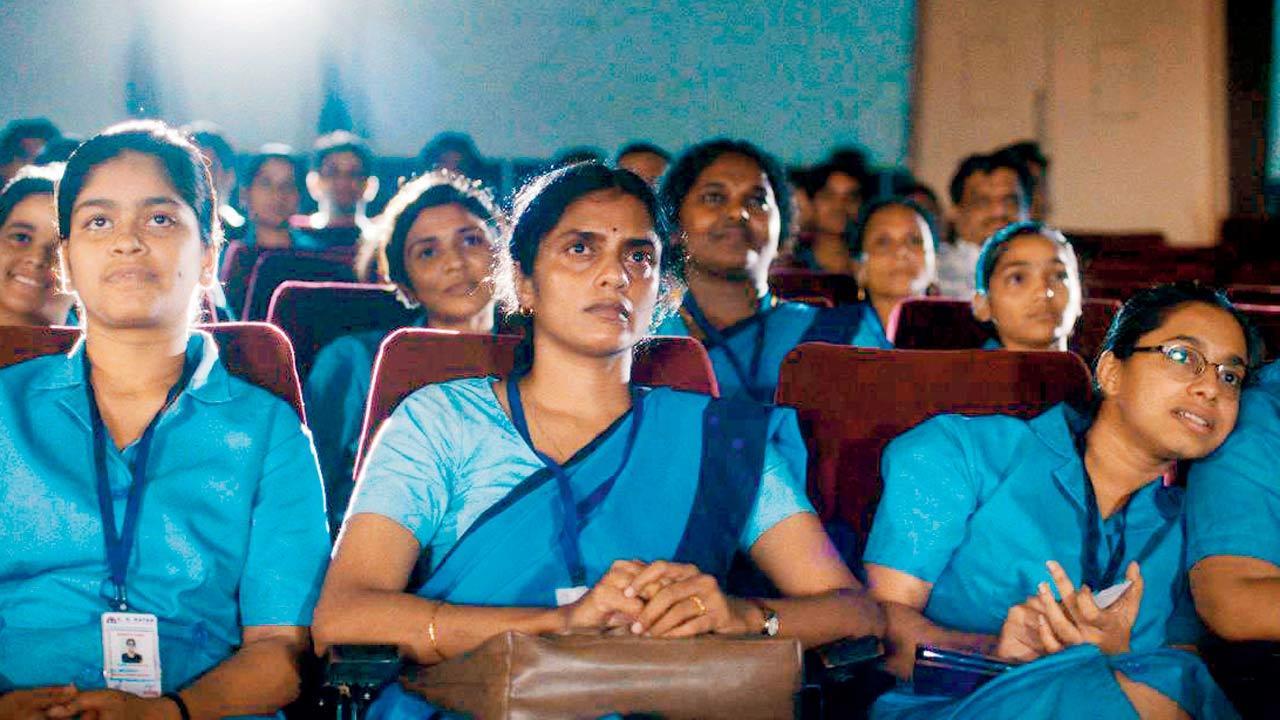All We Imagine as Light (AWIAL) might be a story of women finding their own in a space that feels free, but before that, director Payal Kapadia weaves this as a love letter to Mumbai

A still from All We Imagine As Light
All We Imagine as Light
A: Drama
Dir: Payal Kapadia
Cast: Kani Kusruti, Divya Prabha, Chhaya Kadam, Hridhu Haroon
Rating: 4/5
ADVERTISEMENT
It’s coincidental that I started writing this review of All We Imagine as Light while on the coastal road, which now offers us a clear glimpse of Haji Ali. Almost 12 years ago, on my first day in the city, this was the first picture I clicked, with the sun setting behind the dargah. Then it is almost befitting that I am staring at the same view, so many years later as I am writing the review of the most honest portrayal of Mumbai in a film.
All We Imagine as Light (AWIAL) might be a story of women finding their own in a space that feels free, but before that, director Payal Kapadia weaves this as a love letter to Mumbai. The film captures the cruel and compassionate side of the city, with all the chaos of what it entails to live here. Moving between the depiction of loneliness, desire, alienation, and cultural identity, AWIAL makes you come alive in a way cinema must.
Kapadia’s story follows three women and celebrates how female friendships are designed to save us from the relentless blows of patriarchy.
Prabha (played perfectly by Kani Kusruti) is a reflection of silence and loneliness. She yearns for a life that she had to forgo and seeks refuge in the breathlessness of Mumbai. Her marriage is a memory that is growing fainter with time after her husband left her to go to Germany in pursuit of bigger dreams. But Prabha doesn’t allow herself to seek something new. Sharing her physical space is Anu (a feisty Divya Prabha) brimming with the recklessness of youth. She’s in a clandestine relationship with Shiaz, a Muslim boy, lavishing time and her modest earnings on their fleeting moments together. In their equation lies the juxtaposition of our past and present—Prabha is shackled by her history, while Anu lives for the now. It’s enchanting how Kapadia captures Anu’s defiance against tradition from the gaze of Prabha’s envy. Thrown into this mix is Parvaty (a robust Chhaya Kadam), the eldest among the trio, who faces displacement as slum clearances threaten her out of her home. I couldn’t help wonder—can we ever make a Mumbai story without reflecting housing troubles and urban inequity?
What you love about Kapadia’s storytelling is that she refuses to define the relationships of her characters. Two contrasting emotions walk hand-in-hand. There is so much happening in the film; the canvas is vast, and Kapadia’s insightful storytelling had to be played with nuance. Her actors step up and show us the most wholesome depiction of womanhood. I particularly enjoyed how Kapadia makes one story flow into the other, telling audiences that experiences of women are universal, regardless of where they come from.
When Parvaty decides to return to her coastal village, Prabha and Anu help her leave. And that’s where Kapadia’s story changes tone with hints of magic realism. The story moves from being an incisive commentary to a meditative study on memory, loss, and transcendence, reminiscent of the works of Satyajit Ray. The filmmaker handles these different tonal shifts seamlessly.
Visually, the film is a masterpiece of art direction—from the melancholic blues of Mumbai to the earthy tones of rural settings—she craftily uses light and shadow. The sound too has a dreamlike quality.
It’s a sumptuous film tackling heavy subjects. But Kapadia makes it a personal telling of the subtleties of human experience. The film’s strength lies in its ability to juxtapose the tangible with the transcendent and personal with the universal. I often ask filmmakers—what is that one core reason you decided to make this film? Kapadia’s answer is in her title—to find some light despite the darkness.
 Subscribe today by clicking the link and stay updated with the latest news!" Click here!
Subscribe today by clicking the link and stay updated with the latest news!" Click here!







